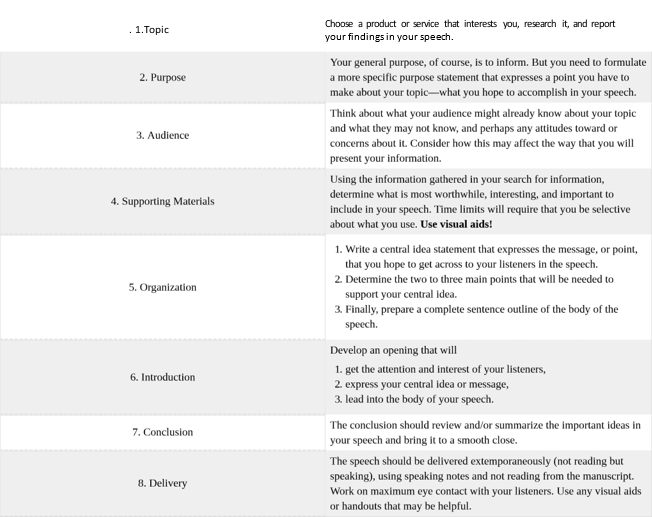Learning Objectives
Discuss the parts of an informational presentation.
Understand the five parts of any presentation.
An informational presentation is a common request in business and industry. It’s the verbal and visual equivalent of a written report. Information sharing is part of any business or organization. Informative presentations serve to present specific information for specific audiences for specific goals or functions. The type of presentation is often identified by its primary purpose or function. Informative presentations are often analytical or involve the rational analysis of information. Sometimes, they simply “report the facts” without analysis, but they still need to communicate the information clearly and concisely. While a presentation may have conclusions, propositions, or even a call to action, the demonstration of the analysis is the primary function.
A sales report presentation, for example, is not designed to make a sale. It is, however, supposed to report sales to date and may forecast future sales based on previous trends.
An informative presentation does not have to be a formal event, though it can be. It can be generic and nonspecific to the audience or listener, but the more you know about your audience, the better. When you tailor your message to that audience, you zero in on your target and increase your effectiveness. The emphasis is on clear and concise communication, but it may address several key questions:
- Topic: Product or Service?
- Who are you?
- Who is the target market?
- What is the revenue model?
- What are the specifications?
- How was the information gathered?
- How does the unit work?
- How does current information compare to previous information?
Table 13.6.1 lists any presentation’s five main parts or components (McLean, S., 2003).

You will need to address the questions to establish relevance and meet the audience’s needs. The five parts of any speech will serve to help you get organized.
Sample Speech Guidelines
Imagine that you have been assigned to give an informative presentation lasting five to seven minutes. Follow the guidelines in Table 13.6.2 and apply them to your presentation.

Key Takeaway
Informative presentations illustrate, explain, describe, and instruct the audience on topics and processes.
Exercises
Write a brief summary of a class or presentation you personally observed recently; include what you learned. Compare with classmates.
Search online for an informative speech or presentation that applies to business or industry. Indicate one part or aspect of the presentation that you thought was effective and one you would improve. Provide the link to the presentation in your post or assignment.
Pick a product or service and devise a list of five points you could address in a two-minute informative speech. Place them in rank order and indicate why.
With the points discussed in this chapter in mind, observe someone presenting a speech. What elements of their speech could you use in your speech? What elements would you not want to use? Why? Compare with a classmate.
McLean, S. (2003). The basics of speech communication. Boston: Allyn & Bacon.
This page titled 13.6: Creating an Informative Presentation is shared under a CC BY-NC-SA 3.0 license and was authored, remixed, and/or curated by Anonymous (LibreTexts Staff), from which source content was edited to the style and standards of the Pressbook platform licensed under a Creative Commons Attribution-NonCommercial-ShareAlike 4.0 International License by Brandi Schur.

